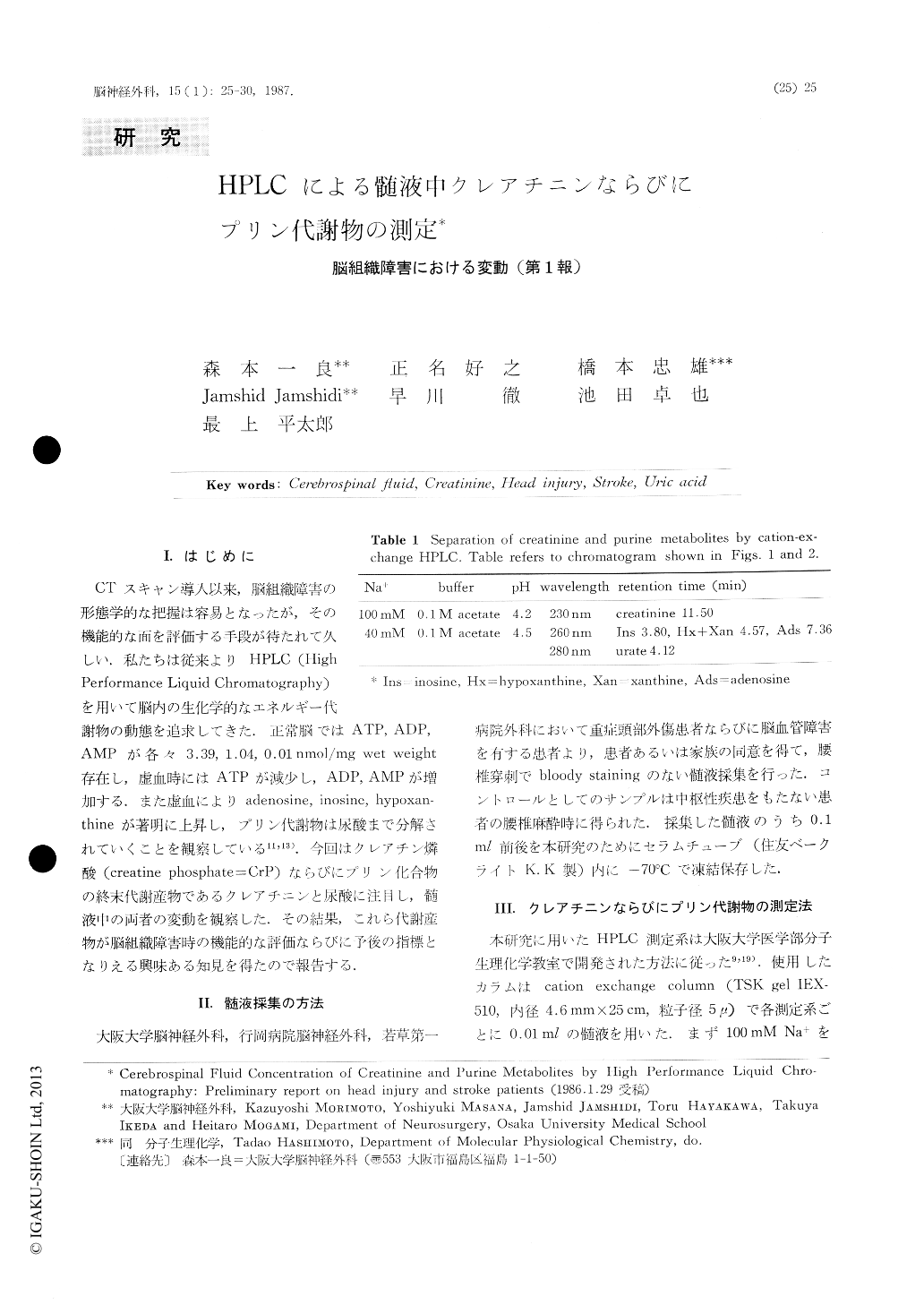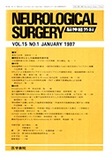Japanese
English
- 有料閲覧
- Abstract 文献概要
- 1ページ目 Look Inside
I.はじめに
CTスキャン導入以来,脳組織障害の形態学的な把握は容易となったが,その機能的な面を評価する手段が待たれて久しい.私たちは従来よりHPLC(HighPerformance Liquid Chromatography)を用いて脳内の生化学的なエネルギー代謝物の動態を追求してきた.正常脳ではATP,ADP,AMPが各々3.39,1.04,0.01nmol/mg wet weight存在し,虚血時にはATPが減少し,ADP,AMPが増加する.また虚血によりadenosine,inosine,hypoxan—thineが著明に上昇し,プリン代謝物は尿酸まで分解されていくことを観察している11,13),今回はクレアチン燐酸(creatine phosphate=CrP)ならびにプリン化合物の終末代謝産物であるクレアチニンと尿酸に注目し,髄液中の両者の変動を観察した.その結果,これら代謝産物が脳組織障害時の機能的な評価ならびに予後の指標となりえる興味ある知見を得たので報告する.
A prospective high perfomance liquid chromato-graphy (HPLC) study was performed in eighteen patients with head injury and stroke and four control volunteers to evaluate creatinine and purine meta-bolites concentration (adenosine, inosine, hypoxan-thine, uric acid) in cerebrospinal fluid (CSF). The present FIPLC method is rapid, accurate and sensitive in the same isocratic run and no specimen pretreat-ment of 0.02ml CSF is necessary. The creatinine level in CSF was increased from 122 to 169μmol/l in some patients, and was found unrelated to that of serum.

Copyright © 1987, Igaku-Shoin Ltd. All rights reserved.


